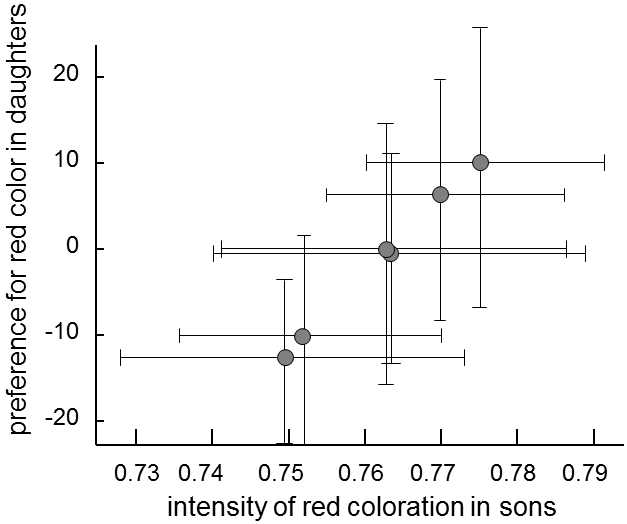XV.5.1 Fisher’s model shows that the gene for the preference for a trait spreads together with the genes for the preferred trait in the population
The best-known mechanism of fixation of the gene for preference was described in the 1930’s by the forefather of modern evolutionary biology and mathematical statistics, R. A. Fisher. If females begin to prefer males with a certain secondary sexual trait, then the bearers of this trait are understandably at an advantage in competition with the other individuals, have more offspring on an average and the genes for the particular trait will gradually spread in the population. Simultaneously, the gene for preference for the particular trait will also spread, as, similarly as sons will inherit the gene for the particular trait, daughters inherit, from their mothers, the gene for preference for the particular trait. Sons can also inherit the gene for the preferred trait from their mothers (and daughters can inherit the genes for the preference for the trait from their fathers), as bearers of the relevant mutually complementary genes also reproduced more frequently in the previous generations. Thus, if a male exhibits a certain secondary sexual trait, it is probable that it bears in its genome, not only the allele determining this trait from his father, but also the allele for its preference from his mother.
The originally only theoretical model was later also confirmed experimentally. Studies performed relatively recently on sticklebacks (Gasterosteus) demonstrated that the intensity of the preferred red color in the males of these fish is positively correlated with the degree of preference for red color in their sisters (Bakker 1993)(Fig. XV.4).

Fig. XV.4 Correlation between the intensity of the red wedding coloration in sons and preference for red color in daughters. In the experiment, the correlation between the preference for a red-coloured partner in daughters and the intensity of red coloration in sons was determined for the offspring of six pairs of sticklebacks (Gasterosteus aculeatus). Preference for a red color was measured as the percent of time that the females spent with the redder male in an experiment in which they could choose between two males. The effect of variations in the intensity of the red coloration in the two males from which the female chose was eliminated statistically prior to plotting on the graph. Simultaneously, the sons and daughters matured separately, so that the differences in preferences were determined genetically and not by learning (imprinting). Overall, 61 daughters and 103 sons were monitored in the experiment. It is apparent that there is a correlation between the degree of expression of the secondary sexual traits in the males and the preference for this trait in the females. Modified according to Bakker (1993).
